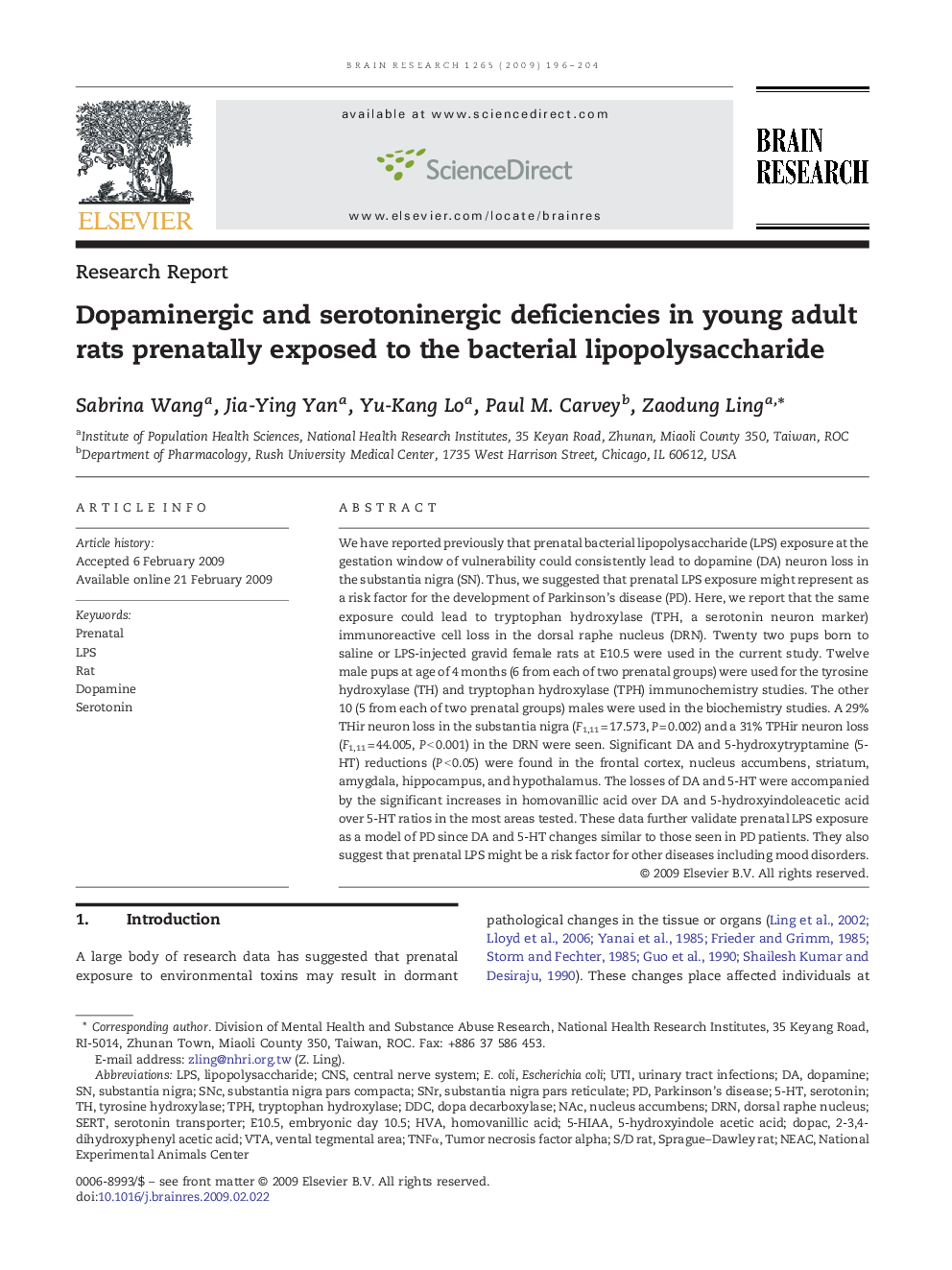| Article ID | Journal | Published Year | Pages | File Type |
|---|---|---|---|---|
| 4328436 | Brain Research | 2009 | 9 Pages |
We have reported previously that prenatal bacterial lipopolysaccharide (LPS) exposure at the gestation window of vulnerability could consistently lead to dopamine (DA) neuron loss in the substantia nigra (SN). Thus, we suggested that prenatal LPS exposure might represent as a risk factor for the development of Parkinson's disease (PD). Here, we report that the same exposure could lead to tryptophan hydroxylase (TPH, a serotonin neuron marker) immunoreactive cell loss in the dorsal raphe nucleus (DRN). Twenty two pups born to saline or LPS-injected gravid female rats at E10.5 were used in the current study. Twelve male pups at age of 4 months (6 from each of two prenatal groups) were used for the tyrosine hydroxylase (TH) and tryptophan hydroxylase (TPH) immunochemistry studies. The other 10 (5 from each of two prenatal groups) males were used in the biochemistry studies. A 29% THir neuron loss in the substantia nigra (F1,11 = 17.573, P = 0.002) and a 31% TPHir neuron loss (F1,11 = 44.005, P < 0.001) in the DRN were seen. Significant DA and 5-hydroxytryptamine (5-HT) reductions (P < 0.05) were found in the frontal cortex, nucleus accumbens, striatum, amygdala, hippocampus, and hypothalamus. The losses of DA and 5-HT were accompanied by the significant increases in homovanillic acid over DA and 5-hydroxyindoleacetic acid over 5-HT ratios in the most areas tested. These data further validate prenatal LPS exposure as a model of PD since DA and 5-HT changes similar to those seen in PD patients. They also suggest that prenatal LPS might be a risk factor for other diseases including mood disorders.
